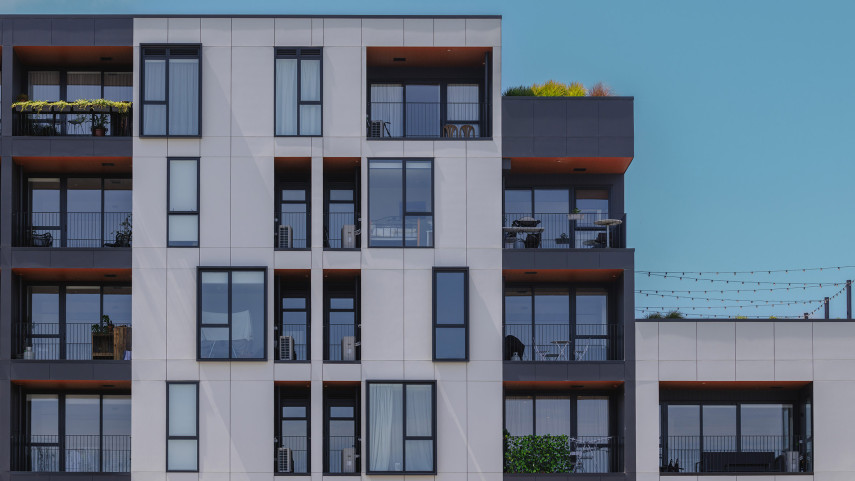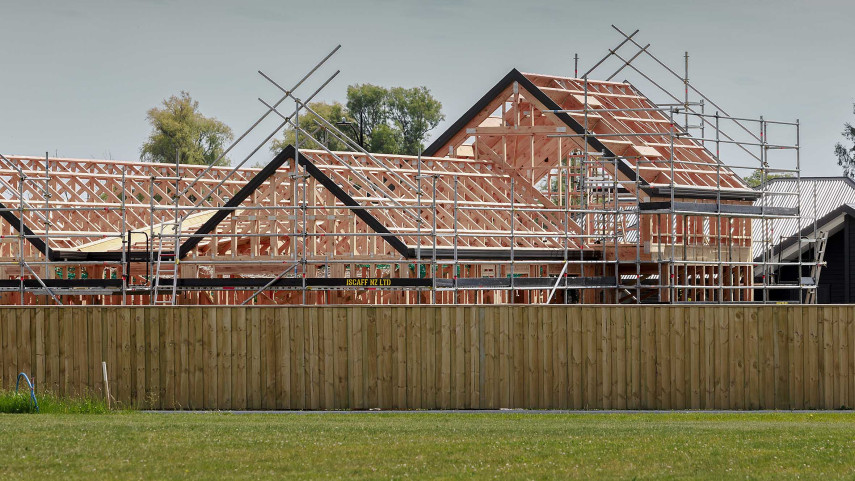The main checks undertaken during the common types of building inspections carried out by Hurunui, Waimakariri, Christchurch, Selwyn and Ashburton Councils.
Changes to how and when we seek your Licensed Building Practitioner number
At the moment for those residential projects that involve restricted building work, we ask for your Licensed Building Practitioner (LBP) number at various times throughout your construction project.
From 1 November 2022 we will be looking at collecting relevant LBP information at the time of inspection booking, so have your license number handy when you ring or book online. From this date onwards please be prepared and have your LBP card ready onsite so the building inspector carrying out your building inspection can confirm your LBP number/license.
Further information about the LBP Scheme is available in the LBP handbook(external link).
For more details of the specific inspections process in your area, select the relevant Council:
- Ashburton District Council(external link)
- Christchurch City Council
- Hurunui District Council(external link)
- Selwyn District Council(external link)
- Waimakariri District Council(external link)
Further details are available in our guide to building inspections [PDF, 1.2 MB]. This information will be updated regularly when requirements change.
Each building site is unique and will have its own individual requirements so it’s important you read the documents and pay particular attention to any conditions listed on your building consent construction documentation and advice notes.
It is your responsibility to determine if a resource consent is required and, if so, that it has been applied for and approved before any work begins.
All consent documentation must be kept on-site at all times. To help identify your particular site, please ensure adequate signage is in place, especially in remote or rural locations.
- Erosion and sediment control measures to be in place and maintained.
- All building consent documentation to be on-site at all times (inc conditions and advice notes, specifications, inspections schedule) and is to be in a legible format.
- Book pre-pour inspections prior to booking concrete.
- Confirm boundary peg locations and lot number.
- Check building is sited as per approved building consent plans (check conditions and advice notes as a building location certificate may be required).
- Check proposed floor level has been set to agreed datum.
- Check all vegetation has been stripped from the building platform.
- Excavate foundations – ensure foundations are plumb and level at the base with all loose material removed.
- Check firm bearing has been achieved.
- Check building consent documentation for special geotechnical or structural engineer requirements, including engineers inspections (copies of their site notes/PS4 will need to be sighted by the building inspector).
- Ensure foundation width and depth measurements are as specified.
- Check reinforcing is installed as detailed including type, size, and spacing. Ensure reinforcing is correctly lapped, and supported with adequate cover.
- Check that wastes are sleeved and adequate grade has been achieved.
- Sub-floor ventilation locations.
- DPM laid – lapped and taped at joins.
- Check slab thickenings are in place including those required by roof truss plan.
- Free joint in place if required.
- Rebates in place.
- Under-slab insulation in place (if required).
- Waste pipes in position, correct number and location.
- HWC copper relief pipe in place.
Piles
- Check location for ordinary, anchor and braced piles.
- Check adequate pile depth, width or diameter is achieved.
- If piles are driven, provide a driving log and engineer’s certificate.
- Erosion and sediment control measures to be in place and maintained.
- All building consent documentation to be on-site at all times (inc conditions and advice notes, specifications, inspections schedule) and is to be in a legible format.
- Engineer’s inspection completed (if required).
- Engineer’s site notes and PS4 may be required.
- The correct type of block used.
- Correct number of courses.
- Horizontal and vertical reinforcing tied and centred in block cavity.
- Clean outs in place, reinforcing tied.
- Bond beam reinforcing as detailed, i.e. stirrups.
- Control joints in place.
- Temporary bracing or propping required.
- Erosion and sediment control measures to be in place and maintained.
- All building consent documentation to be on site at all times (inc conditions and advice notes, specifications, inspections schedule) and is to be in a legible format.
- Engineer’s inspection completed (if required).
- Engineer’s site notes and PS4 may be required.
- Check conditions and advice notes as a building location certificate may be required.
- Correct pile size, treatment and height.
- Bearer size, treatment, spacing and connections.
- Adequate bearing on piles.
- Joist size, treatment, spacing and connections.
- Solid blocking in place.
- Dwangs in place for brace panel hold downs.
- Fixings – Stainless Steel (within 600mm of the ground or within sea spray zone) or galvanised.
- Insulation in place, adequate access and ventilation.
- DPM to the ground if specified.
- Erosion and sediment control measures to be in place and maintained.
- All building consent documentation to be on site at all times (inc conditions and advice notes, specifications, inspections schedule) and is to be in a legible format.
- Check conditions and advice notes as a building location certificate may be required for Recession Planes.
- All previous site instructions completed.
- “As-built” truss layout plan.
- Control cuts to slab completed.
- Framing; correct grade, treatment and spacing.
- DPC to plates.
- Plate hold downs completed.
- Frame connections completed.
- Truss and rafter connections completed.
- Purlin size, spacing and fixings as detailed.
- Z nails to outriggers.
- Roof bracing completed – including gable end/roof strap/roof plane and dragon ties.
- Stud to top plate fixings completed.
- Lintel hold downs and fixings completed.
- Lintel sizes checked.
- Post/beam connections completed.
- Valley board in place and ends supported.
- Brace hold downs completed. Locations checked.
- Bracing plywood completed with all fixings in place.
- Bottom chord restraints in place.
- Fire rated wall hold downs and solid blocking completed.
- Engineer’s inspection completed if required.
- Engineer’s site notes and PS4 may be required.
Pre-membrane
- Support framing in place, correct treatment and spacing.
- Minimum fall achieved as shown in consent documents.
- Plywood substrate complete; H3.2 treated, sheets staggered and angle fillet in place.
- Stainless screw fixings in place at the correct spacing.
- Scuppers, outlets and overflow relief in place.
- Drip edge in place.
Building wrap
- Erosion and Sediment Control Measures to be in place and maintained.
- All building consent documentation to be on-site at all times (inc conditions and advice notes, specifications, inspections schedule) and is to be legible.
- All previous site instructions completed.
- Correct building wrap installed and the correct type for cladding system.
- Wrap installation – wrap securely fastened with adequate lap.
- Wrap returned into openings, adequate bottom plate cover achieved, wrap above rebates.
- Slab edge protection completed – e.g. DPM/Mulseal.
- Sill tapes in place – must be installed as per manufacturers installation details.
- Thermal break in place (steel framing).
- Penetrations sealed through wrap/pipes/wires etc.
- Wrap supported with polypropylene tape to prevent insulation bulging.
- Fire rated walls – correct linings installed to outer face.
Cavity battens and flashings
- Cavity battens in place – correct size, treatment and spacing set out as per cladding specifications.
- Where cavity battens with copper treatment are to be in contact with metal claddings ensure separation is provided, such as strips of paper-based roof underlay.
- Cavity closers in place.
- Saddle flashings installed.
- Head flashings in place – turn ups to ends, sealed to wrap.
- Sill tray flashings in place for direct fix claddings.
- Back flashings in place at change of cladding junctions.
- WANZ support bars – full length, level and fixings at the required spacing.
- AAC cladding cavity system to be installed as per approved building consent plans.
- Erosion and Sediment Control Measures to be in place and maintained.
- All building consent documentation to be on-site at all times (inc conditions and advice notes, specifications, inspections schedule) and is to be legible.
- Cavity – minimum 40mm and maximum 75mm achieved.
- Cavity clean and clear of mortar.
- Masonry veneer – maximum 20mm overhang of foundation.
- Veneer wall ties in place with correct spacing and fixings.
- Weep holes in place, including to columns at correct spacing.
- Control joints in place.
- Minimum wall or panel size achieved (230mm).
- Flashings in place – DPC jamb and sill flashing with a kick out fillet.
- Lintel bars, shelf angles in position with flashing tape or additional layer of wrap over.
- WANZ support bars (galvanised or stainless steel) – full length, level and fixings at required spacing.
- All elevations as close as possible to half high height.
- Erosion and Sediment Control Measures to be in place and maintained.
- All building consent documentation to be on-site at all times (inc conditions and advice notes, specifications, inspections schedule) and is to be legible.
- All previous site instructions completed.
- All substrates in place and fixings completed.
- Control joints in place as per manufacturers requirements.
- Proprietary flashing systems completed to openings and cladding junctions.
- Base-of-cladding flashings in place.
- Clearances to cladding at apron flashings, window flashings, decks and ground.
- Penetrations sealed.
- Reinforcing to cut panels primed.
- Rebate coated with bituminous emulsion if required (check installation specifications).
- Erosion and Sediment Control Measures to be in place and maintained.
- All building consent documentation to be on-site at all times (inc conditions and advice notes, specifications, inspections schedule) and is to be legible.
- All previous site instructions completed.
- Exterior claddings completed including all roof flashings and penetrations (the building is weathertight).
- Temporary weatherproofing may be required to garage doors, chimney caps etc.
Insulation
- Installation of wall and ceiling insulation completed, correctly fitted, adequate clearance to roof underlay.
- The correct product and R-value.
Air seals
- Complete to all openings including meter box and garage door jambs.
- Window identification labels and safety glass labels in place.
- Backing rod in place behind air seal to prevent overfilling cavity.
- Packers sealed over.
- Silicone sealant in place to narrow gaps.
Pipework
- Pipework completed, clipped and lagged outside insulation.
- Pressure test completed for water supply pipework and above-ground sanitary plumbing pipework (where applicable). Pipework testing statement (B-084 [DOCX, 284 KB]) required.
- Correct pipework size, runs, distance to HWC.
- Solar water heater pipework installed.
- Gas pipework installed.
- Wastes and vents in place.
Framing
- Hold downs to bottom plates including all brace elements completed.
- Flush boxes are 90mm minimum from brace panel edges.
- Maximum acceptable moisture content achieved.
- Ceiling battens; spacing and fixings.
- Stiffeners in place to stud and top plate penetrations over 35mm diameter.
- Solid blocking for ceiling diaphragms – openings only to be in middle third each way.
- Metal angles in place to tiled showers fixed at 300mm centres.
- Solid blocking to firewalls.
- Fire separation penetrations suitably fire rated.
- Dwangs in place above shower trays.
- Erosion and Sediment Control Measures to be in place and maintained.
- All building consent documentation to be on-site at all times (inc conditions and advice notes, specifications, inspections schedule) and is to be legible.
- All previous site instructions completed.
- Correct linings in place.
- Bracing completed – correct linings and fixings in place as per bracing system used.
- Wet area water-resistant linings in place as specified.
- Metal angle in place to the internal corner of the tiled shower (if applicable).
- Fixings completed to tiled areas as specified.
- Fire rated walls – correct linings and fixings completed as per system requirements.
- Ceiling diaphragms completed; fixings and access openings as specified by the manufacturer and approved building consent plans.
- Penetrations located as specified by the manufacturer.
- All previous site instructions completed.
- Tanking product as specified in approved building consent plans and specifications.
- Required number of coats applied.
- Bandaging to internal and external corners.
- Required grade achieved to recess and floor.
- Penetrations sealed.
- Certified and approved applicator and installer used.
- Inspection carried out prior to any tiles being laid.
- PS3 to be provided by a certified applicator.
- Erosion and Sediment Control Measures to be in place and maintained.
- All building consent documentation to be on-site at all times (inc conditions and advice notes, specifications, inspections schedule) and is to be legible.
- Drain layers details and registration number available.
- Stormwater and wastewater drains laid in position and exposed with correct inspection point locations.
- Adequate grade achieved.
- Drains fully supported, laid in the correct bedding.
- Sumps and soak holes completed.
- Water test on to wastewater drains.
- Primer used on glued joints.
- Septic tank system and located as per approved building consent plans.
- As-laid plan accurately drawn.
Note: If an inbuilt heating unit is to be installed - we require a completed pre-installation inspection.
- Ensure heating unit is being installed is as per approved building consent plans and specifications.
- Installation to be carried out in strict accordance with the manufacturer’s instructions including:
- Hearth type and size.
- Seismic restraints.
- Heating unit clearances to combustible materials.
- Flue shielding in place.
- Flue type, flue connections, spacers.
- Ceiling penetrations as per flue system specifications.
- Flue clearance to combustible materials.
- Ceiling plate has required ventilation gap.
- Roof penetration; additional support and soaker flashings as required.
- Flue height and support above the roof.
- Wetback installation – HWC open vented.
- Header tank required to rural installations.
- Smoke alarms in place.
- Extra room or heating unit ventilation in place (if required).
- Installers construction statement completed and received.
A final inspection is carried out when all other listed inspections have been completed and passed, and all details on approved building consent documentation have been completed.
Sometimes, other than the final inspection, there will be other inspections types (including onsite disposal field, heating unit and solar hot water system) which need to also be completed. Please ensure that this is identified when booking inspections so additional time can be allocated.
This is the last opportunity the Council has to inspect the completed building and it is, therefore, important that all aspects of the building work are completed.
In order for the Council to carry out this inspection, the building work must be completed to a standard where it can pass. A final inspection is not designed to provide a list of outstanding items for the contractor to complete.
Some of the following items are commonly identified as failed items at final inspection. These items should be checked by the contractor prior to booking the final inspection.
External
- Finished ground level, clearance to wall cladding.
- Paved area levels, falls and stormwater control completed.
- The finished height of gully dishes.
- Stormwater disposal complete – i.e. strip drains, sumps, downpipes.
- Soffit, window and doors sealed.
- Drain vent installed including roof flashing.
- Mechanical extraction vents completed.
- Wall claddings and soffit linings painted.
- Ventilation and weep holes in place to masonry or stone veneers.
- Snow straps to spouting where required.
- Vermin proofing completed; below garage door reveals and at cladding junctions.
- How water cylinder relief drains terminating in a safe location.
- 190mm maximum step down at door thresholds.
Internal
- Hot water must be on to check the anti-scald temperature.
- All HWC seismic restraints in place.
- Smoke alarms to be in place.
- Window manufacturer’s identification stickers in place.
- Check that shower cubicles are not leaking by directing water to the corners.
- Gas hob protection in place if required.
- Ventilation to all spaces where moisture from laundering, washing, bathing and showering are generated.
- Sanitary fixtures to be sealed to the wall.
- All plumbing fit off work to be completed.
Roof space
- Insulation to be tidy and cut neatly around all ducting.
- Downlights are CA or IC rated with required clearance to insulation.
- Downlight transformers above the insulation
- Mechanical vents; ducting to be connected
- Check if screw fixings are missing purlins
- Vertical insulation supported
- AAC Panel – Autoclaved Aerated Concrete Panel.
- BLC – Building Location Certificate.
- CA Rated - Closed abutted (CA).
- DPC – Damp Proof Course (Malthoid or Supercourse).
- DPM – Damp Proof Membrane.
- HWC – Hot Water Cylinder.
- LBP – Licensed Building Practitioner.
- PS1 – Producer statement for design.
- PS2 – Producer statement for design review.
- PS3 – Producer statement for construction.
- PS4 – Producer statement for construction review.
- WANZ Bar – Window Association of New Zealand (Window Installation System).
Related news

Christchurch named one-stop shop for supermarket consenting
Christchurch City Council has been selected to serve as the one-stop consenting authority for the country’s large scale supermarket developments.
26 Nov 2025
Christchurch withdraws from further housing intensification
Christchurch’s bid to opt out of further housing intensification has been accepted.
10 Nov 2025
New Council initiative to raise profile of eco buildings
Owners of energy-efficient buildings in Christchurch can now have that noted as a badge of honour on their property files.
27 Jun 2025